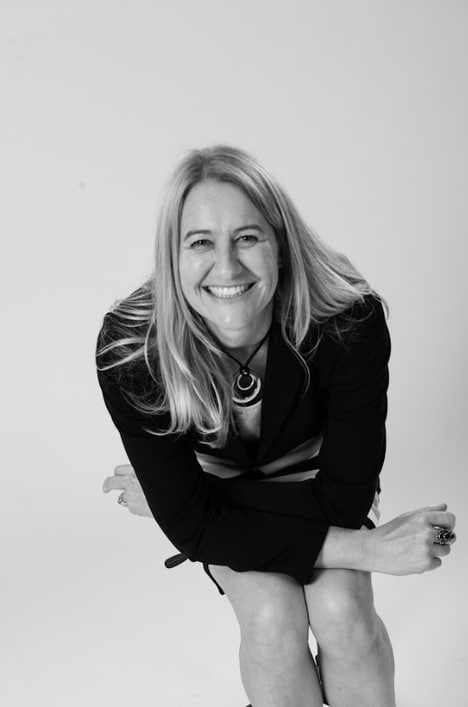Crafting Scents and Stories
An Interview with Karen Stanton, Chief Marketing Officer at IFF
 In an industry where success is measured by the invisible -- the scent that triggers a childhood memory, the flavor that transforms an ordinary moment into something extraordinary -- Karen Stanton operates at the intersection of science and human emotion. As Chief Marketing Officer at IFF, a Fortune 500 company that most consumers have never heard of but encounter multiple times daily, Stanton guides innovation for one of the world's largest creators of flavors and fragrances. Her approach to innovation goes beyond traditional product development, focusing instead on "creativity with purpose" that taps into the deepest human experiences. In this conversation, Stanton reveals how IFF balances cutting-edge technology with profoundly human insights, and why the best ideas often emerge not at the desk, but in the shower.
In an industry where success is measured by the invisible -- the scent that triggers a childhood memory, the flavor that transforms an ordinary moment into something extraordinary -- Karen Stanton operates at the intersection of science and human emotion. As Chief Marketing Officer at IFF, a Fortune 500 company that most consumers have never heard of but encounter multiple times daily, Stanton guides innovation for one of the world's largest creators of flavors and fragrances. Her approach to innovation goes beyond traditional product development, focusing instead on "creativity with purpose" that taps into the deepest human experiences. In this conversation, Stanton reveals how IFF balances cutting-edge technology with profoundly human insights, and why the best ideas often emerge not at the desk, but in the shower.1. What does innovation mean to you at IFF?
Innovation at IFF is about creativity with purpose. It's not just generating ideas for the sake of ideas, but thinking with the consumer in mind. Even though we're a business-to-business organization, we're constantly looking at the end consumer. We're trying to identify the most impactful trends taking shape in food and beverage, personal care, household care, and fragrance. Innovation for us means thinking about what's next—what consumers are looking for, often before they even know they want it.
2. How does your team generate new ideas and identify emerging trends?
We use a multi-layered approach. First, we rely heavily on trend reports for signals of change and case studies that support our thinking about where consumers are heading. But we also do extensive co-creation with our customers—both large multinational CPG companies and smaller entrepreneurial organizations. Innovation looks quite different for these two groups: with small customers, it's about moving really fast, while with large customers, it's about scaling far and wide.
We're always looking for the next trend in each category. Take beverages—we had to predict the emergence of no-low alcohol or the Greek yogurt segment, which was an entirely new category consumers didn't know they wanted. We conduct "trend safaris," going out to restaurants and bars to watch what's happening and gather inspiration firsthand.
3. Do you have any specific rituals for resetting your team to be creative?
This is the hardest part, and I wish I had a perfect formula. We have an innovation process called the Five Ds—Dream, Design, Deploy, Deliver, Drive—and that first "Dream" phase is where we incorporate trends and insights. But I always tell my team about the "Three Bs"—because most creativity happens on the Bus, in the Bath, or in Bed. That's transportation when you're zoning out, the shower, or lying in bed unable to sleep.
We openly acknowledge that your best ideas probably won't come while you're sitting at your desk churning things out. They'll happen when you step outside, digest things overnight, and come back the next morning. So we encourage people to think about challenges on their way home, in the shower the next morning, or during those quiet moments.
4. How are you balancing human insight with emerging technologies like AI in your innovation process?
The human element is absolutely critical, particularly in fragrance. When you smell something, your memory receptors are located right next to your smell receptors in the brain—you literally cannot smell something and interpret it without having some kind of memory or association. AI can't do that yet; the electronic nose isn't sophisticated enough.
What we use AI for is identifying signals of change and trends, but the ultimate decision-maker is always the human. It's the person who smells something and says, "That reminds me of home," or "That takes me back to childhood and the smell of fresh grass when my father mowed the lawn." We're trying to capture those deeply human moments that only people can recognize, while using AI to process the data that gets us there.
5. What's the biggest challenge you face when building an innovative culture?
Creating a culture around something that can't be rushed or manufactured is incredibly challenging. Innovation has to come from the top down—it needs to be not just allowed, but actively nurtured and encouraged. By structuring our Five D process and calling the first phase "Dream," we're explicitly encouraging that mindset. We've created tools and toolkits for teams to execute within that dream phase, with clear gates that say you can't move to the next stage until you've properly dreamed and put consumer understanding at the heart of everything.
6. What's your best advice for leaders in other industries who want to replicate this approach to innovation?
Listen and watch. Whoever your customer or consumer is, go watch them. Find out where the pain points are, what delights them, what turns them on, and where the frustration points are. That's where you'll find the gold of innovation—the opportunity to solve a problem or give people what they're looking for, or perhaps what they never even knew they needed.
7. Looking to the future, how will IFF continue to lead in innovation as consumer needs evolve?
We'll continue to balance the art and science of what we do. While technology will help us process signals and data faster, the human element—that ability to connect scent and flavor to memory and emotion—will remain our core differentiator. We'll keep exploring new categories before consumers even know they want them, maintaining our approach of creativity with purpose while staying deeply connected to the human experiences that drive our innovation.
References: iff


